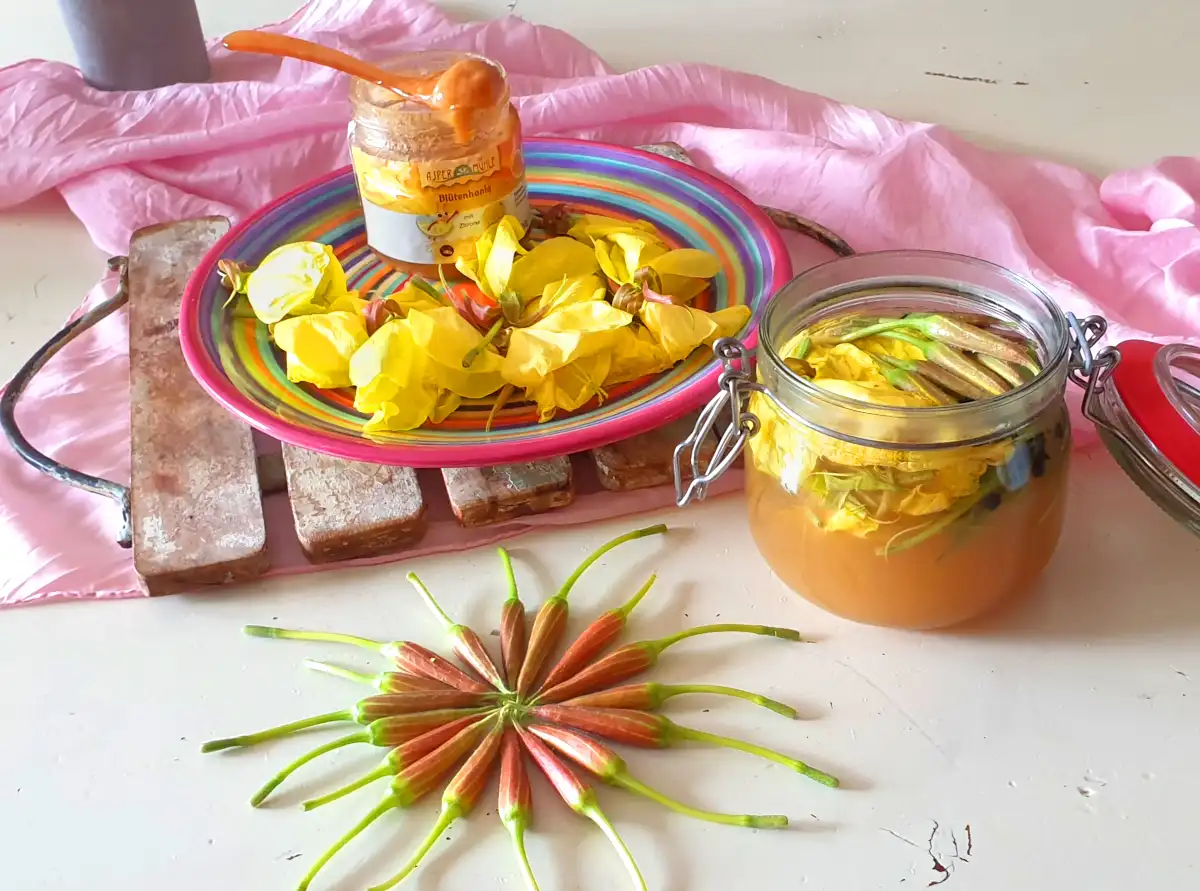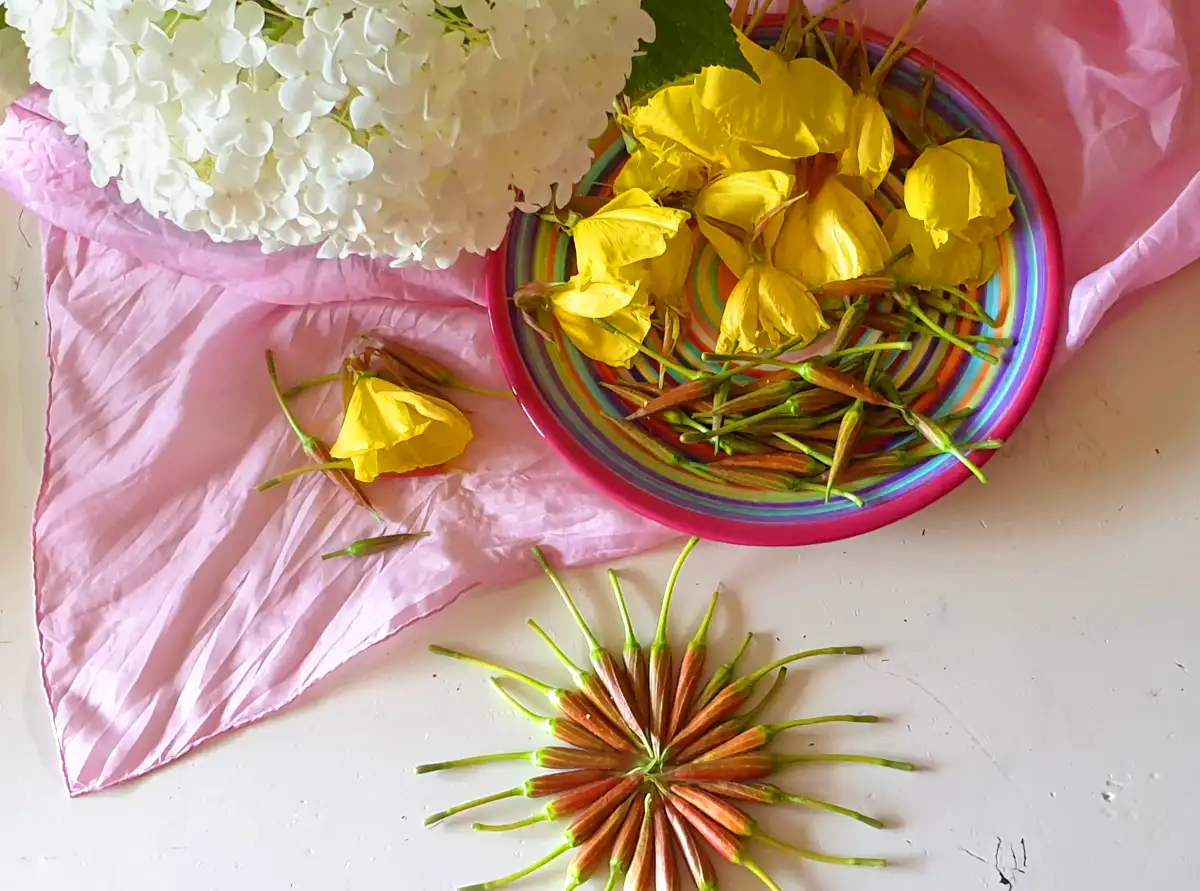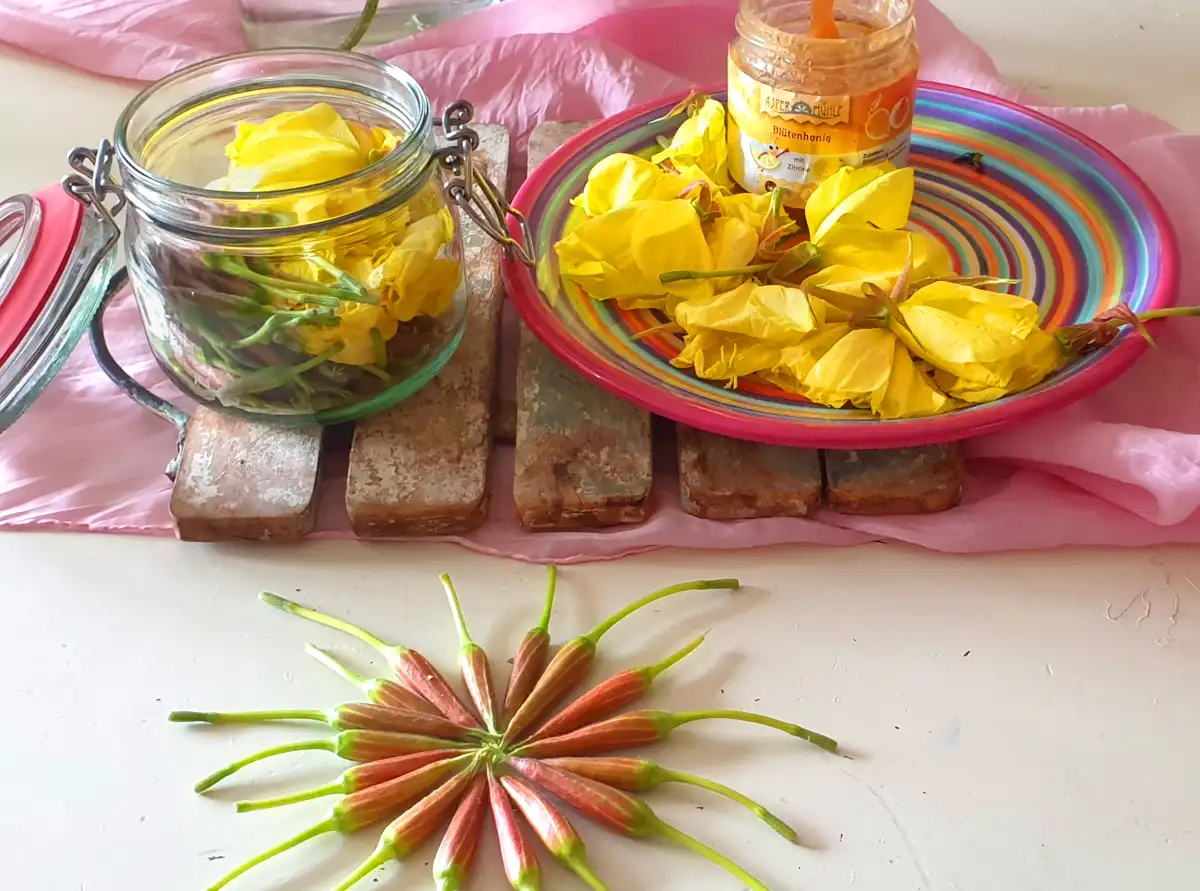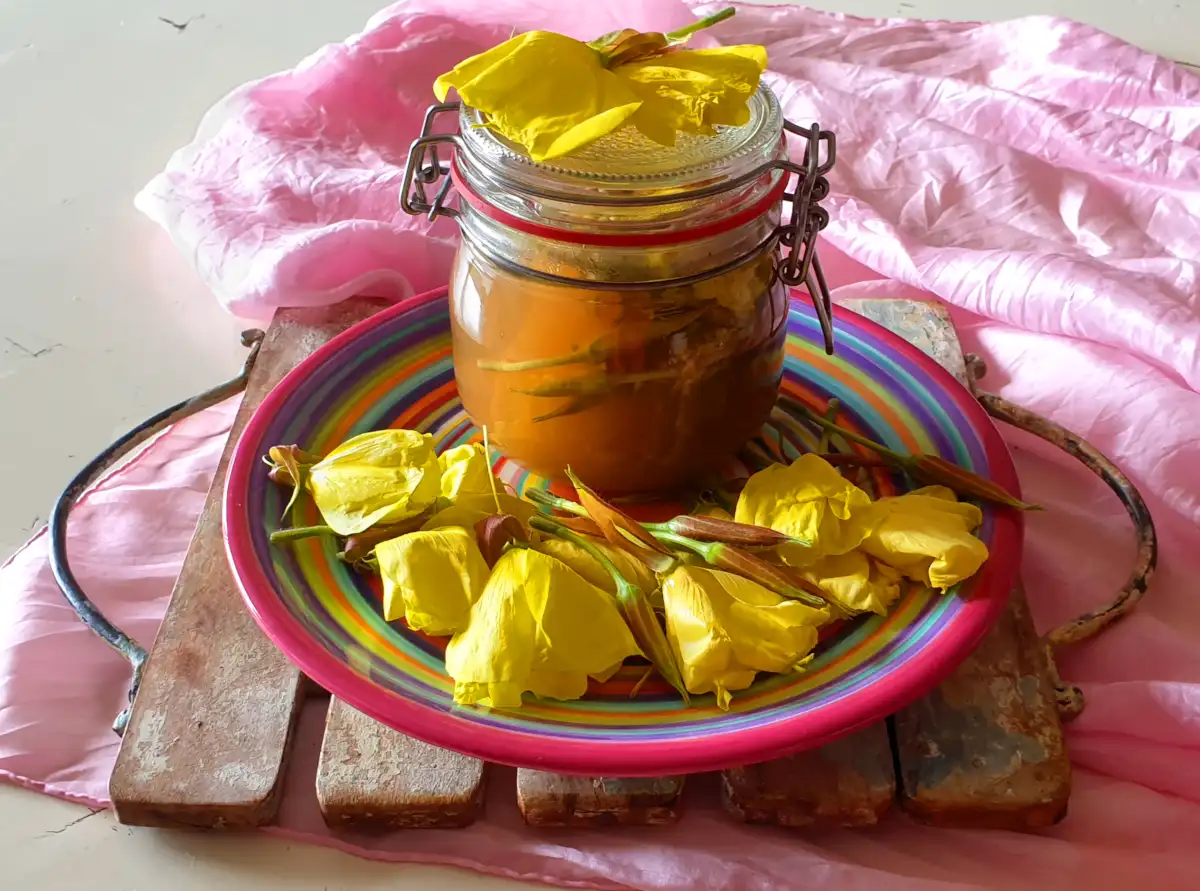Evening primrose buds and flowers pickled sweet and sour
Preparation time: 45 minutes - Difficulty level: medium
- 20 to 30 evening primrose flower buds
- 250 ml water
- 250 ml apple cider vinegar
- 1 thick tablespoon honey
- 1 teaspoon each of colorful peppercorns and other spices: e.g. anise, bay leaf, lavender, fennel

Evening primroses are a miracle of nature. They open slowly at dusk and reveal their radiant beauty in their lemon-yellow blossoms as darkness falls. An enchanting spectacle.
Their petals have a mild jasmine-like flavor. They are collected in the evening to make syrup, liqueur, desserts or sweet and sour as we do.
Preparation:
Collect the flower buds and open flowers of the evening primrose. Please only pick 2 buds per plant so that there are enough left for the moths and bees.
Leave them on a kitchen towel for approx. 30 minutes so that any inhabitants can still escape before you process them further.
In the meantime, you can sterilize a jar with hot water, bring the water and vinegar to the boil in a pan, add the spices and simmer for approx. 3 minutes.
Then layer the flower buds in a jar and pour the broth over them. Close the jar immediately afterwards and leave to infuse for a few days.
The sweet and sour flower buds taste delicious with cheese, as a dessert, on salad or simply with cream cheese as a bread topping.


Tip for use:
Have you ever tried our recipe for home-made apple cider vinegar? It's great for pickling flowers, buds and fruit.
Information about the common evening primrose, Oenothera biennis (high light)
Distribution: Worldwide; native to South and North America, introduced to Europe and Asia
Habitat: Sunny, dry fallow land, coastal areas, sand dunes, meadows, gardens
Collection times:
Late summer to early spring: roots of the 1st year
In spring: shoots of the 2nd year
In summer: flower buds, flowers, young seed heads, leaves
In late summer: ripe seeds
Evening primrose can be found in the wild, sometimes on roadsides. It is hardly known to the general public and is often underestimated. Yet it contains valuable ingredients, has a pleasant fragrance and is edible.
You can buy capsules containing evening primrose oil in pharmacies, which women take to regulate their hormone balance. In this form, evening primrose is one of the best known and most widely used medicinal plants in the world today.
The oil extracted from the small black seeds is known for its healing properties for skin suffering from neurodermatitis.
The lemon-yellow flowering plant originally comes from the American continent, where it has been used for thousands of years for various healing purposes, from wound healing to skin care. The first settlers from Europe were enthusiastic about the plant and its effects. Although they took all kinds of plants from their homeland to America, they also brought some back to Europe, initially to botanical gardens.
The relatively inconspicuous plant opens its flowers shortly after sunset. Its sweet fragrance, reminiscent of wine, appeals to humans and insects alike.
The European aristocracy had a romantic streak at times and invited people to an evening drink to enjoy this spectacle.
The evening primrose then spread throughout Europe by self-seeding. Soon even ordinary people found the plant in their gardens. But instead of just looking at it, they ate it. This was wise, because with its high content of gamma linoleic acid, evening primrose promotes the healing of skin and wounds and regulates hormone balance.


Plant picture:
All evening primrose species have 4 petals. The common evening primrose has heart-shaped, bright yellow petals surrounding a stamen with yellow pollen. The scent is strongest at dusk. The flower buds taste delicately peppery. When the flowers wither, fruits form which ripen into seed capsules and can be collected when their tips open.
The seeds contain a lot of vitamin E.
The pale pink taproots reach the size of parsnips and can be dug up in winter until spring when they are still tender.
The common evening primrose is a biennial. This means that in the first year it forms ground-covering leaf rosettes, in the second year a ribbed, slightly bristly stem appears, which can grow up to 1.5 m high. The wrinkled, matt green leaves are elongated oval with pale veins. They can grow up to 20 cm long. Evening primrose leaves can be eaten raw or cooked.
Caution: Do not eat if you suffer from calcium deficiency, epilepsy or regularly take blood thinners.
The pale pink roots taste mildly peppery, like parsnips. They can be boiled, fried or thinly sliced and added to wok dishes.
The leaves are best steamed briefly like spring leafy vegetables. Their taste is reminiscent of mild cabbage.
The petals and seeds with their jasmine-like flavor are collected in the evening to use for syrups, liqueurs or creamy desserts.
We have preserved the flowers here in a sweet and sour sauce.